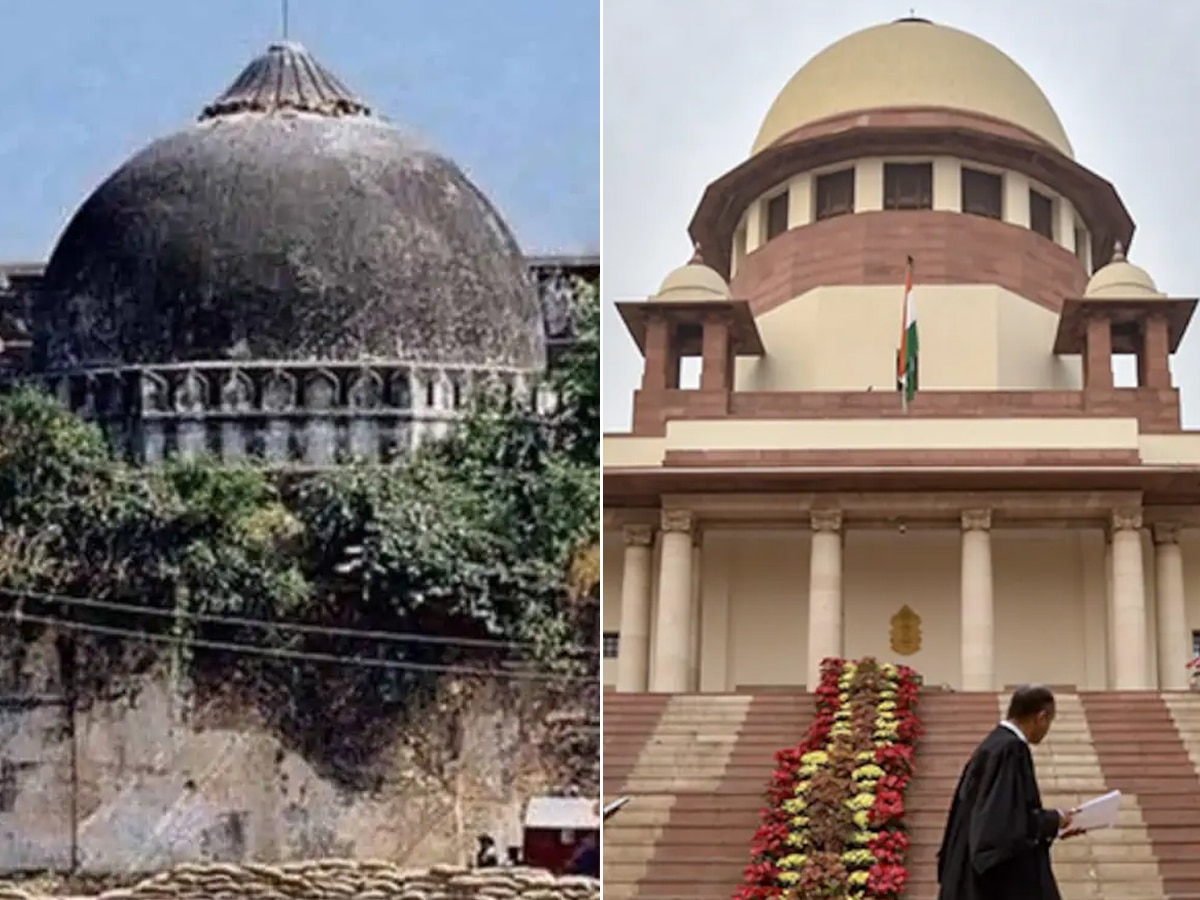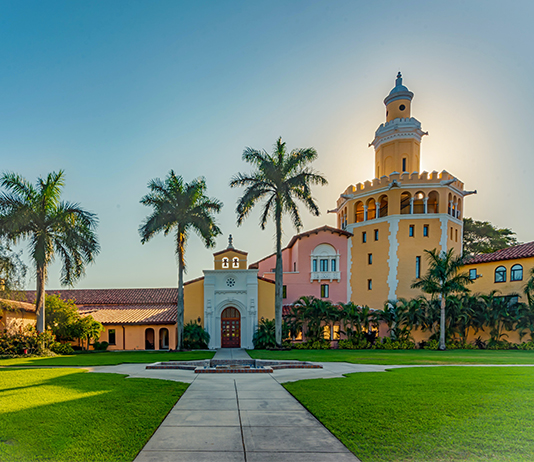Exploring the Legal Timeline of the Ram Janmabhoomi-Babri Masjid Dispute: From Inception to Final Verdict
The disputed Babri Masjid was demolished today, 31 years ago in Ayodhya. Take a look at the legal timeline or developments of one of the biggest, most complex cases of Indian Judiciary – the Ram Janmabhoomi-Babri Masjid Dispute.
New Delhi: Judiciary is the third pillar of democracy where people turn to, for justice. Each day, multiple cases are decided and legal proceedings take place; the Ayodhya Dispute, also known as the Ram Janmabhoomi-Babri Masjid Dispute is part of the list of the biggest and most prominent cases in Indian Judiciary. Today, December 6 marks the 31st year of the demolition of Babri Masjid which had further intensified this case whose final judgement was finally given in 2019. In usual course, a court case may be passed from a District Court to a High Court and then to the Supreme Court which has the last say but there are other legal measures also, that may be taken up to solve or finish a case. The Ayodhya Dispute is one such case, which has been through all legal processes in pursuit of justice. From the first ever dispute with regards to Shri Ram Janmabhoomi Temple-Babri Masjid in 1853 to the final verdict by a five-judge Constitutional Bench of the Supreme Court in 2019, read more to know how this dispute was solved by touching or exploring almost all possible legal processes.
Here’s How Decades-Long Ram Janmabhoomi-Babri Masjid Dispute Began
Tracing the beginning of the decades-long Ayodhya Dispute, the first event of communal violence in the disputed area was recorded in the year 1853 after which next year, it was the British who erected a fence separating the place of worship for Hindus and Muslims who were expected to use the outer court and the inner court respectively. Initially, five civil suits were filed by both the Hindu and Muslim communities in the Faizabad District Court – The first suit in 1950, by Gopal Singh Visharad seeking the right to worship idols installed at ‘Asthan Janmabhoomi’; the Court allowed the worship to go on but restrained removal of idols. The second suit was filed in the same year by Ramchandra Paramhans but was later withdrawn. Nirmohi Akhara filed the third suit in 1959 seeking possession of the site and claiming to be the custodian of the spot where Lord Rama was supposedly born. Two years later, the fourth suit was filed by the UP Sunni Central Board Of Waqfs who claimed possession of the Babri Mosque and the adjoining land. In 1986, a plea was filed by Hari Shanker Dubey, a district judge directed the opening of Masjid Gates for ‘darshan’ and the Muslims then set up the Babri Masjid Action Committee.
Ayodhya Title Dispute As Taken Up By An ‘Altering’ Special Bench
In the year 1989, a fresh suit had been filed by Deoki Nandan Agarwal, former Vice-President of Vishwa Hindu Parishad (VHP) in the Allahabad High Court, on behalf of Lord Rama for the Declaration of Title And Possession in its favour. In this year itself, the previously filed suits pending before the Faizabad Court were transferred to a special bench in Allahabad High Court. The First Special Bench included Justice KC Agarwal (Acting Chief Justice), Justice Umesh Chandra Srivastava and Justice Syed Haider Abbas Raza. The special bench was later altered during the case, reason being the retirement of a judge in the present bench.
The Second Special Bench included Justice Satish Chandra Mathur, Justice Brijesh Kumar and Justice Syed Haider Abbas Raza. Justice Brijesh Kumar of the second Special Bench remembers the grave environment during the hearings of the case and says, “During that time, the atmosphere had become so tense that apart from the security provided to the judges and in general, commandos were also posted around the Court. Not only this, we are extremely surprised to see commandos inside the court rooms during the court proceedings, which in usual course is not allowed.”
After the third alteration in the Special Bench, the members were Justice AP Mishra, Justice Chaudhry Abdur Rahim and Justice IP Vashishtha; the fourth special bench included Justice AP Mishra, Justice IP Vashishtha and Justice Syed Rafat Alam.
From Allahabad High Court To Supreme Court – Road To Final Verdict
The Ayodhya Dispute Title Suit was first filed in 1989 and amid the proceedings of the Special Bench at the Allahabad High Court, in the same year, VHP lay foundation of a Ram Temple on the land near the disputed masjid and then three years later on December 6, 1992 the Babri Mosque was demolished by the supporters of VHP, BJP and Shiv Sena which prompted communal riots that killed over 2000 people.
A few days after the disputed mosque was razed, a Commission of Enquiry was set up to look into the reasons behind the demolition of the mosque and the communal riots triggered by it; the Liberhan Commission was set up by the PM and retired High Court judge, Justice MS Liberhan was to head it. The commission was expected to submit a report within three months but it took close to 17 years for them to come up with their final report.
In April 2002, the court proceedings in the Ayodhya Title Dispute Case begin again at the Lucknow Bench of the Allahabad High Court and in 2003, the High Court directed the Archaeological Survey of India (ASI) to conduct a survey by excavating the land under the disputed site. On September 30, 2010, Justice Sibghat Ullah Khan, Justice Sudhir Agarwal and Justice Dharam Veer Sharma of the Allahabad High Court delivered its verdict and divided the Ayodhya title among the Hindu and Muslim litigants in 2:1 ratio – one-third to Nirmohi Akhara, one-third to Sunni Waqf Board and one-third to Ram Lalla Virajman.
Appeals were filed by all litigants regarding their rights and in 2011, the Supreme Court of India stayed the Allahabad High Court order. In March, 2017 the Supreme Court suggested an out-of-court settlement and that the stakeholders must hold talks and find a solution amicably as the matter is extremely sensitive; the case could not be solved by this process. Several court proceedings later on September 27, 2018 the Supreme Court refused a plea to refer the matter to a five-judge Constitution Bench and ruled that a three-judge bench shall continue hearing the matter. Then-Chief Justice Dipak Misra retired on October 2, 2018 and on January 8, 2019 Chief Justice Ranjan Gogoi reassigned the Ayodhya Dispute to a five-judge Constitution Bench.
The five-judge Constitution Bench comprising of CJI Ranjan Gogoi, Justice SA Bobde, Justice DY Chandrachud, Justice Ashok Bhushan and Justice S Abdul Nazeer hear the case. By citing Section 89 of Code Of Civil Procedure (CPC), the bench ordered the parties to attempt mediation on March 8, 2019 for a period of eight weeks; on July 9, 2019 one of the parties approached the court to inform about the unsuccessful mediation attempts. Final arguments began from August, 2019 and in October that year, the judgement was reserved.
The final verdict where the title was awarded to Shri Ram Virajman and an alternate site in Ayodhya for construction of a mosque was granted to the Sunni Waqf Board, was delivered on November 9, 2019. The Court also directed the Centre to set up a trust for managing and overseeing the construction of the temple and added that the Babri Masjid Demolition was against the Rule of Law. While the Hindus were happy with the judgement, the main group of Muslim litigants said that they would honour the judgement of the Supreme Court and will not appeal against it.
Case That Went Through All Legal Processes
As mentioned earlier, the controversial Ram Janmabhoomi-Babri Masjid Case is one that possibly went through all legal processes in pursuit of justice in its long duration of almost seven decades post independence. Suits were first filed in a District Court, cases were then transferred to the High Court, a Commission of Enquiry headed by a retired High Court judge was set up as part of investigation of the demolition, an out-of-court settlement was suggested by the judiciary, the Supreme Court also heard the matter, the idea of mediation was brought up by the apex court and then eventually, the case was transferred from a three-judge Constitution Bench to a five-judge Constitution Bench for the final verdict.


